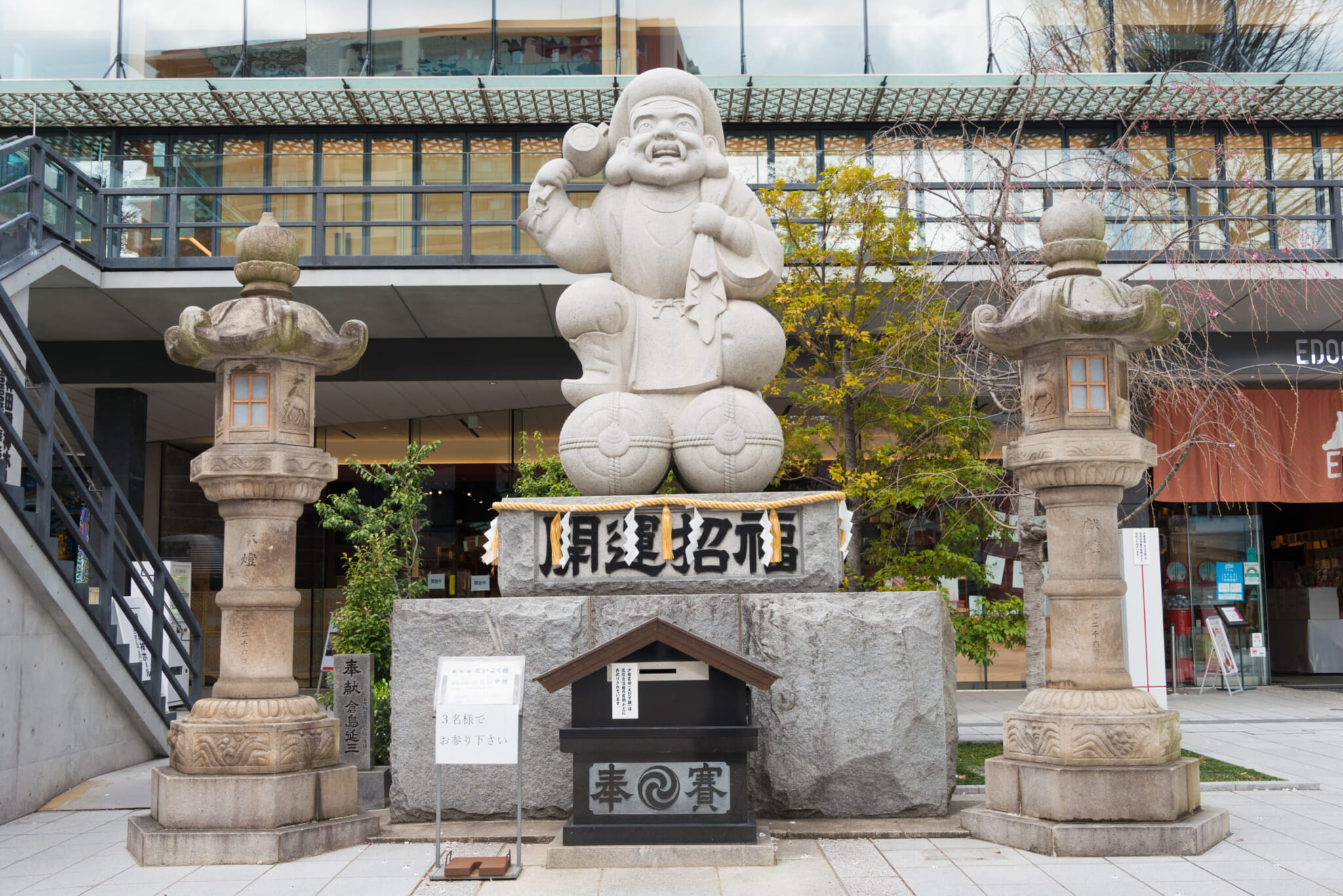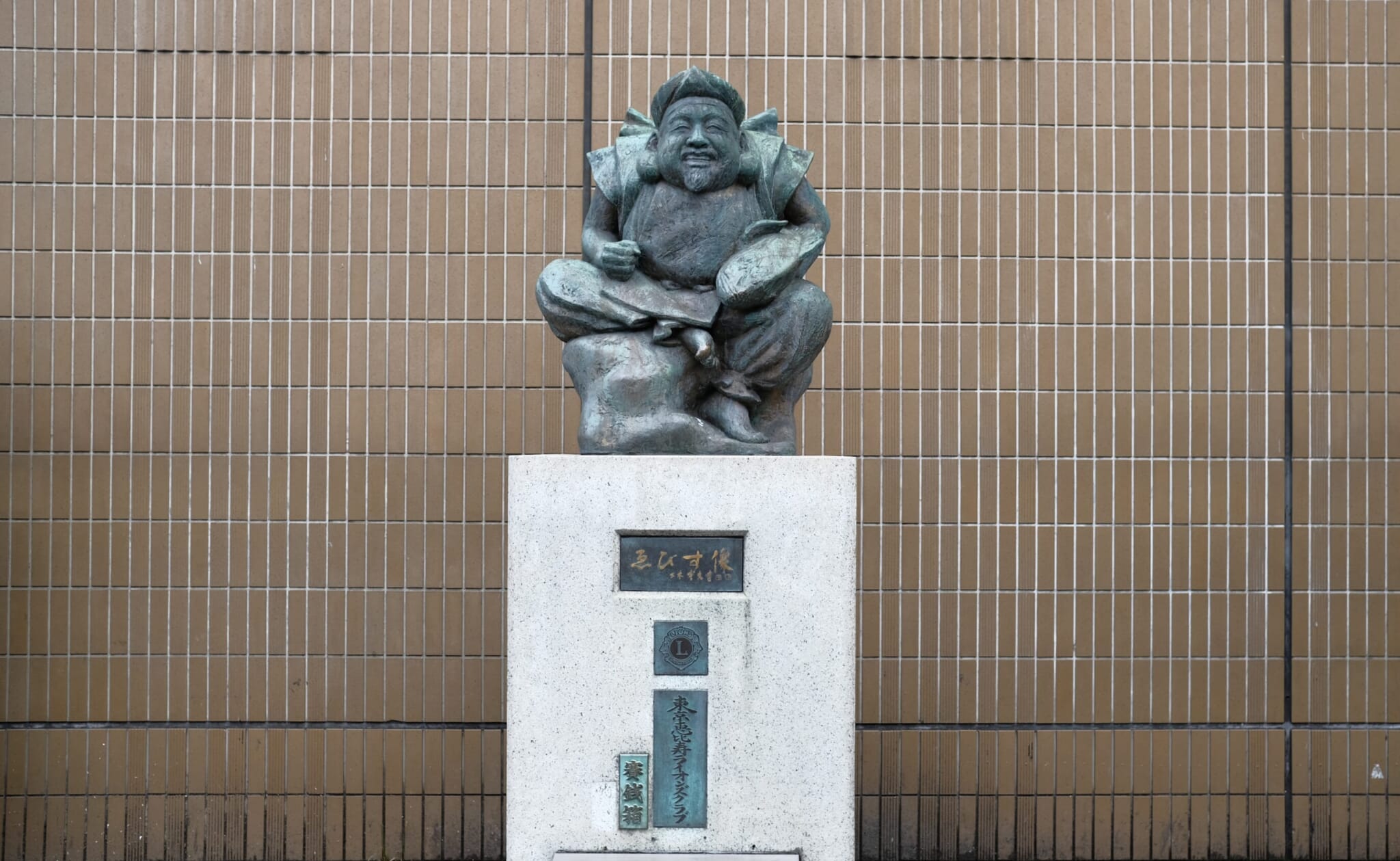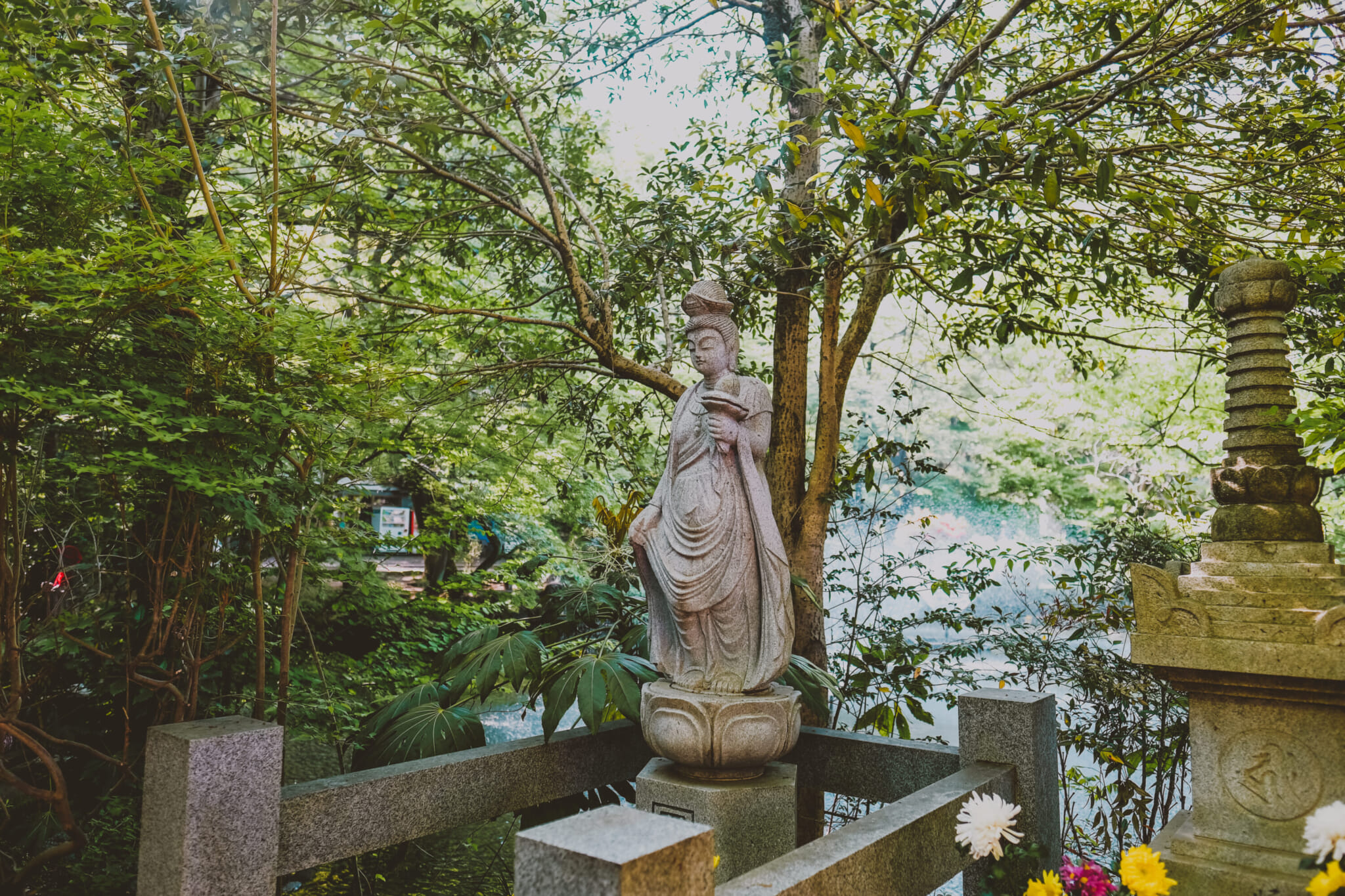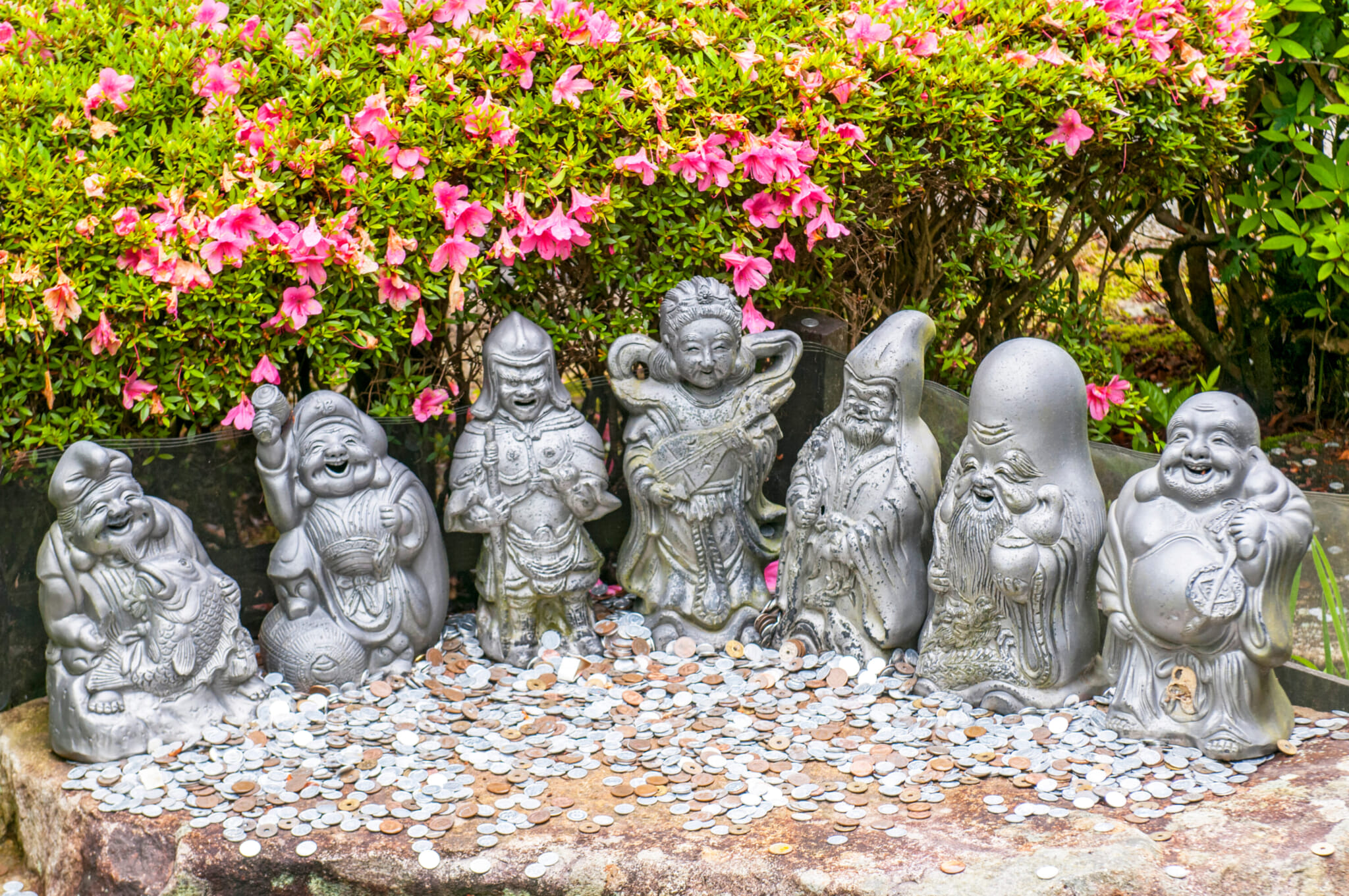You may recognize the Seven Gods of Fortune, or Shichifukujin, from New Years’ decorations, train stations or your favorite beer brand (yes, I’m talking about Ebisu). But how much about them do you really know?
The Seven Gods of Fortune are comprised of Daikokuten, Bishamonten, Ebisuten, Juroujin, Fukurokuju, Benzaiten and Hoteison. Coming from a blend of Shinto, Taoist, Hindu and Buddhist cultures, the Seven Gods of Fortune can be visited at temples and shrines all over Japan.

Daikokuten statue at Kanda Myojin Shrine in Chiyoda, Tokyo | Photo by beibaoke via Shutterstock
Daikokuten (大黒天) — God of Wealth and Agriculture
The god of prosperity, agriculture and wealth, Daikokuten originated from an incarnation of the Hindu deity Shiva. He is often presented with a kind face, a wooden mallet and a sack of treasures, standing over rice bales. As the god of commerce, he is a good deity to pray to when you’re looking for some good luck in your career.
Daikokuten is enshrined in many temples and shrines in Tokyo. Some famous ones include Sensoji’s Yogodo Pavilion, Daienji Temple and Kanda Myojin Shrine, which has Japan’s largest stone statue of Daikokuten.
Bishamonten (毘沙門天) — God of War
Bishamonten, the god of war and the punisher of evil, is thought to have originated from the Buddhist deity Vaiśravana, the guardian of the north. He is the only member of the Seven Gods of Fortune dressed in armor, with a spear in his right hand and a tiny pagoda in his left.
Patrons can ask for protection and to ward off evil from Bishamonten at Zenkokuji Temple, Azabu Hikawa Shrine, Kakurinji Temple and Jindaiji Temple, although the major Bishamon shrines and temples are outside of Tokyo. Chogosonshiji in Nara Prefecture, for example, is said to be where Bishamonten first appeared.

A statue of Ebisu outside Ebisu JR Station | Photo by image_vulture via Shutterstock
Ebisuten (恵比寿天) — God of Prosperity and Fishing
Ebisu is the most well-known among the Shichifukujin, and also the only one of the seven gods with purely Japanese roots. The god of prosperity and fishing, he is the son of the Shinto gods Izanagi and Izanami, the male and female gods of creation. He is represented as a fat, jolly man, holding a fishing rod and a red snapper. Ebisuten and Daikokuten are often presented together, as they are both gods of prosperity.
Some places to pay your respect to Ebisuten are Kanda Myojin Shrine, Ryusenji Temple, Suginomori Shrine and Tomioka Hachiman Shrine. There’s also JR Ebisu Station where there’s a statue of Japan’s favorite Shichifukujin.
Jurojin (寿老人) — God of Longevity
Jurojin, the god of longevity, originates from the Taoist god, the Old Man of the South Pole. He is depicted with a long head, white beard and often has a peach in his hand. He is thought to have once lived on Earth as a Taoist sage.
You can pray to Jurojin for a long, healthy life at Choanji Temple and Myoenji Temple.
Fukurokuju (福禄寿) — God of Wisdom and Health
The god of wisdom, health and happiness, Fukurokuju is also an incarnation of the Old Man of the South Pole. He has a long head and long ear lobes and brings along cranes and turtles, both symbols of longevity.
Fukurokuju can be visited at Myoenji Temple, where he and Jurojin are enshrined together. You can also find him at Imado Shrine and Sengyoji Temple.

Inokashira Park Benzaiten Shrine
Benzaiten (弁財天) — Goddess of Literature and Music
Benzaiten, also referred to as Benten, is the only goddess among the Shichifukujin. She is the goddess of literature, music and femininity. Originally Sarasvati (also Saraswati), the Indian-Buddhist deity of water and creativity, she is often depicted with long, flowing hair and a kimono as well as a biwa — a Japanese lute. Benzaiten’s places of worship are often located near bodies of water.
As well as Enoshima Shrine, she is also enshrined at Inokashira Benzaiten, Banryuji Temple, Fukutoku Shrine and Yoshiwara Benzaiten Shrine.
Hoteison (布袋尊) — God of Happiness and Good Fortune
Hoteison is the god of happiness and good fortune and is thought to have really existed. Originating from Taoist and Buddhist traditions, he is modeled after the Chinese monk Miroku. Represented with a happy face, a bald head and a large belly, Hoteison usually carries a large sack, thought to be a sack of patience.
You can pray to be as happy as the god of happiness himself at Hashiba Fudoson Temple, Gokokuji Temple and Zuishoji Temple.
Related Posts
Interested in Japanese mythology? Check out our other articles below:









